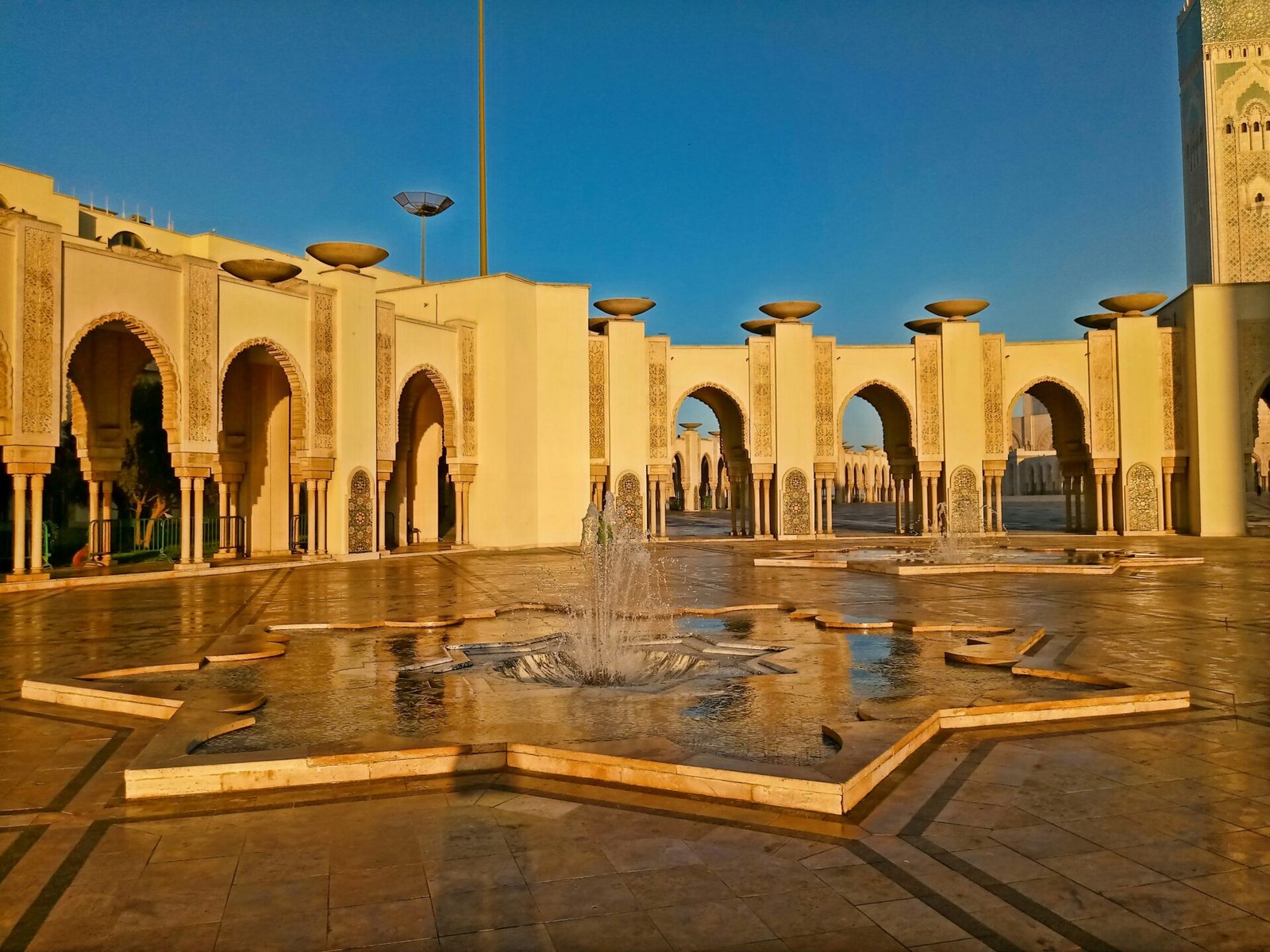The most beautiful monuments to discover in Morocco’s imperial cities
Morocco’s imperial cities—Marrakech, Fes, Meknes, and Rabat—are living testaments to centuries of culture, architecture, and royal power. Each city boasts a unique identity, shaped by dynasties and artistic traditions. This guide will take you through the most iconic monuments worth exploring, from grand palaces and religious landmarks to intricate gates and bustling medinas.
Marrakech – red city and royal heritage
🕌 Koutoubia Mosque
A symbol of Marrakech, the Koutoubia Mosque is the largest in the city and visible from miles away. Its 77-meter-high minaret is a masterpiece of Almohad architecture and a reference point in the medina.
🏰 El Badi Palace
Once a jewel of Saadian power, this ruined palace still impresses with its vast courtyards and massive walls. It tells the story of Morocco’s golden age in the 16th century.
🌴 Bahia Palace
A stunning example of Moroccan craftsmanship, the Bahia Palace offers intricate mosaics, peaceful gardens, and majestic rooms—a glimpse into royal life in the 19th century.
Fes – spiritual and intellectual capital
📚 Al Quaraouiyine University
Founded in 859, this is the oldest existing university in the world. The library and mosque complex remain a beacon of knowledge and spirituality in the heart of Fes el-Bali.
🛕 Bou Inania Madrasa
An architectural gem with carved cedar, zellij tiles, and serene courtyards. It’s one of the few religious buildings in Morocco open to non-Muslims.
🛡 Bab Boujloud (The Blue Gate)
An iconic entry point into the medina of Fes. Its vibrant blue and green tiles make it one of the most photographed spots in the city.
Meknes – the forgotten imperial treasure
🏯 Bab Mansour Gate
Considered one of the most beautiful gates in North Africa, Bab Mansour is a symbol of Sultan Moulay Ismaïl’s ambition and the architectural grandeur of the 17th century.
🏟 Heri es-Souani
These massive royal granaries and stables once stored grain and housed up to 12,000 horses. Their colossal architecture is a testament to the logistical power of Meknes.
🕌 Mausoleum of Moulay Ismaïl
This sacred site is the final resting place of the sultan who made Meknes an imperial capital. The ornate interior blends Islamic artistry and historical reverence.
Rabat – modern capital with royal roots
🏰 Kasbah of the Udayas
Overlooking the Atlantic, this ancient fortress offers cobblestone streets, whitewashed houses, and spectacular sea views. It’s a peaceful retreat from the city buzz.
🕌 Hassan Tower & Mausoleum of Mohammed V
A landmark ensemble that mixes unfinished history and national pride. The red sandstone tower is a relic of an ambitious 12th-century mosque, while the mausoleum honors Morocco’s modern kings.
🏛 Royal Palace of Rabat
Though not open to the public, the exterior of this residence is worth a visit. It remains the political heart of the country and a symbol of the monarchy’s continuity.
Tips for visiting monuments in Morocco
- Opening hours: Many sites close at midday and on Fridays. Always check ahead.
- Dress modestly: Especially in religious sites—long pants, covered shoulders.
- Guided tours: Hiring a certified guide will enhance your understanding and provide historical context.
- Photography: Always ask before taking pictures of people or religious interiors.
Culture in stone : why these monuments matter
Beyond their architectural beauty, these monuments reflect Morocco’s diverse dynasties—Alaouites, Merinids, Almohads, and Saadians. They tell stories of faith, conquest, scholarship, and art. Visiting them offers more than sightseeing—it’s a journey through Morocco’s soul.
Whether you’re wandering through the maze-like alleys of Fes, watching the sunset over the Kasbah of Rabat, or marveling at the mosaics of Marrakech, Morocco’s imperial cities promise timeless encounters with history.

